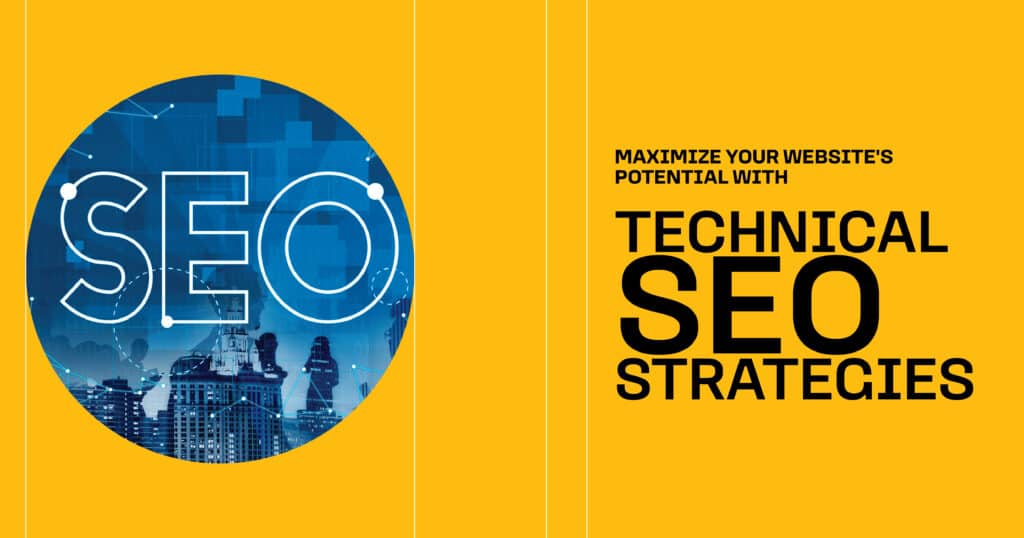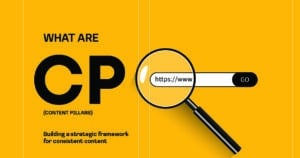In digital marketing, technical SEO is crucial in optimizing your website to ensure it ranks higher on search engines. You can improve your website’s structure, speed, and performance by implementing key technical strategies. This can lead to better search engine visibility, increased organic traffic, and higher conversion rates. This article will explore the fundamental technical SEO strategies and how they can help maximize your website’s potential.
Understanding the Fundamentals of Technical SEO
To fully leverage technical SEO, it’s essential first to understand its core components. Technical SEO involves optimizing your website’s backend to improve its search engine ranking and performance. This goes beyond simple on-page optimization and involves tasks like improving crawlability, optimizing site architecture, and ensuring that your site is accessible to search engines and users. By focusing on technical factors, you can ensure that your website’s pages are correctly indexed and ranked efficiently by search engines. Here’s a breakdown of what constitutes technical SEO:
- Site speed. Optimizing loading times for a better user experience.
- Mobile responsiveness. Ensuring your website works well on mobile devices.
- Secure website. Using HTTPS for secure connections and building trust with users and search engines.
These fundamental areas are key to your technical SEO strategy, leading to better on-page optimization and overall website health.
The Role of Meta Tags in Technical SEO
Meta tags are a foundational component of on-page optimization, but also play an important role in technical SEO. These tags provide search engines with essential information about your website’s content. This includes the meta title, meta description, and meta keywords, which help search engines determine your site’s relevance for specific queries. Here’s why meta tags matter for technical SEO:
- Meta Titles. Ensure the title tag is concise and includes relevant keywords to improve search engine ranking.
- Meta Descriptions. These provide a summary of the page’s content, influencing click-through rates from search results.
- Meta Keywords. Though less important today, including keywords accurately reflecting the content is still beneficial.

Optimizing your meta tags ensures that search engines understand your page content, which improves the likelihood of being ranked higher.
Effective Keyword Research Strategies for Technical SEO
Effective keyword research is a key element of on-page optimization and supports technical SEO. By identifying the right keywords, you ensure that your content aligns with what users are searching for. This helps improve crawlability and enables your website to appear in relevant searches. Here’s how to enhance your keyword research for technical SEO:
- Keyword Relevance. Focus on long-tail keywords that match user intent.
- Search Volume and Competition. Analyze the search volume and competition of target keywords to find the best opportunities.
- SERP Analysis. Examine the search engine results pages (SERPs) to understand which types of content rank well.
Incorporating the right keywords into your website’s technical setup improves visibility, targeting the right audience, and boosting overall rankings.
Enhancing Site Architecture for Better SEO
Site architecture refers to how your website’s pages are structured and connected for users and search engines. A well-organized site improves crawlability and ensures your pages are indexed and ranked appropriately. There are several aspects to consider when enhancing site architecture for technical SEO:
Structuring URLs and Navigation for Search Engines
URLs play a critical role in both user experience and SEO. A clean, well-structured URL is easy to read and understand for both search engines and users. For example, using descriptive, keyword-rich URLs is essential for ranking well. Here’s how to structure URLs:
- Descriptive URLs. Use keywords in the URL to reflect page content.
- Short and Simple. Keep URLs short and avoid unnecessary parameters.
Importance of a Logical Hierarchy and Internal Linking
A logical site structure helps users and search engines navigate your website easily. A strong internal linking strategy also ensures link equity flows efficiently across your site. By linking related pages, you increase the likelihood that essential pages will be discovered and ranked. The key is to maintain a clear hierarchy:
- Homepage. The top of the hierarchy should always link to essential site sections.
- Internal Linking. Properly interlink content to distribute ranking potential and improve crawlability.
Crawlability and Its Impact on Search Engine Visibility
Crawlability refers to how easily search engines can access and index your website’s pages. If your site is not crawlable, search engines won’t be able to index your content, and you won’t appear in search results. This makes crawlability a critical component of technical SEO. Here’s how to improve your site’s crawlability:
Common Crawlability Issues and How to Fix Them
Some common crawlability issues include:
- Broken links. Ensure all internal and external links are working.
- Redirect chains. Avoid multiple redirects that slow down page loading.
- Blocked resources. Make sure the robots.txt file or meta tags are not blocking important content.
By addressing these issues, you can ensure that search engines can crawl and index your site effectively.
Optimizing Internal Linking for SEO Success
Internal linking is an essential part of technical SEO. It helps search engines understand the relationship between different pages on your site, and it distributes page authority to important content. To optimize internal linking for SEO, consider the following strategies:
- Contextual Links. Include links to relevant pages within the body of your content to improve link equity.
- Anchor Text. Use descriptive anchor text that provides context to the linked page.
- Link Depth. Avoid deep-linking too many levels away from the homepage to ensure good crawlability.

Focusing on internal linking improves the flow of link equity, making it easier for search engines to understand and rank your website.
Utilizing Header Tags for Improved SEO
Header tags (H1, H2, H3, etc.) help organize your content, making it easier for users and search engines to understand. They play an essential role in both on-page optimization and technical SEO. Here’s how header tags contribute to your SEO efforts:
- H1 Tag. The main title of the page should include your primary keyword.
- H2 and H3 Tags. Subheadings that break down the content and provide additional opportunities for keyword optimization.
Using header tags properly ensures that your content is readable for users and optimized for search engines.
Key Elements of Technical SEO and Their Impact
| Technical SEO Element | Impact on SEO | Best Practice |
| Meta Tags | Influence search engine rankings and click-through rates | Ensure each page has unique and descriptive meta tags |
| Internal Linking | Helps search engines discover and index content | Link related pages to distribute page authority |
| Header Tags | Organize content for both users and search engines | Use H1 for titles, H2 for subheadings, and optimize for keywords |
| Alt Text | Improves accessibility and helps with image search | Include descriptive keywords related to the image content |
Role of Alt Text in Technical SEO
Alt text is crucial for both user experience and SEO. It provides descriptions of images for users who cannot see them, such as those using screen readers. It also allows search engines to understand the content of your photos. Here’s why alt text is essential for technical SEO:
- Accessibility. Alt text makes your website accessible to a broader audience, including visually impaired users.
- Keyword Optimization. Using relevant keywords in alt text can help improve image search rankings.
Including descriptive alt text for all images on your site enhances accessibility and search engine optimization.
Build a Stronger SEO Foundation With BloomHouse Marketing’s Technical Expertise
At BloomHouse Marketing, we understand the importance of technical SEO in boosting website performance. Our team of experts specializes in optimizing every aspect of your website’s technical setup, from improving crawlability to enhancing site architecture. With our proven strategies, we’ll help you maximize your website’s potential and improve your search engine rankings.
Contact BloomHouse Marketing today for expert help with your technical SEO and start seeing results.

FAQs
- What best practices should be implemented for optimizing meta tags in technical SEO to improve search engine rankings?
Ensure meta tags are concise, contain relevant keywords, and are unique for each page. This improves indexing and ranking. Meta tags should accurately represent the content of each page, helping search engines understand its relevance to specific queries.
- How does effective keyword research contribute to on-page optimization and overall technical SEO success?
Keyword research ensures that content is optimized for user intent, helping search engines rank your pages more effectively and improving crawlability. By targeting the right keywords, you increase the chances of attracting relevant organic traffic, which leads to higher conversions. Additionally, effective keyword research helps structure content around what users are searching for, enhancing your website’s relevance and visibility.
- In what ways can site architecture be enhanced to boost crawlability and improve SEO performance?
Improve site architecture by structuring URLs logically, creating a clear hierarchy, and using effective internal linking to ensure efficient crawlability. A well-structured site helps search engines discover and index your content faster, improving overall performance. Additionally, providing a clean, easy-to-navigate structure enhances user experience, indirectly supporting SEO by increasing engagement and reducing bounce rates.
- How can internal linking strategies be optimized to strengthen technical SEO efforts and increase organic traffic?
To distribute link equity effectively, focus on linking important pages, using descriptive anchor text, and ensuring all links are functional. A strong internal linking structure helps search engines understand the hierarchy of your content and which pages are the most important. Regularly updating and checking internal links prevents broken links, negatively affecting user experience and site rankings.
- What is the significance of using header tags and alt text in technical SEO, and how do they affect keyword ranking and accessibility?
Header tags improve content organization and help search engines understand content structure, while alt text optimizes image content for SEO and accessibility. Proper use of header tags (H1, H2, etc.) ensures content is easy to scan, which improves user engagement and rankings. Alt text allows search engines to index images, which enhances your website’s visibility in image search results and improves accessibility for visually impaired users.









